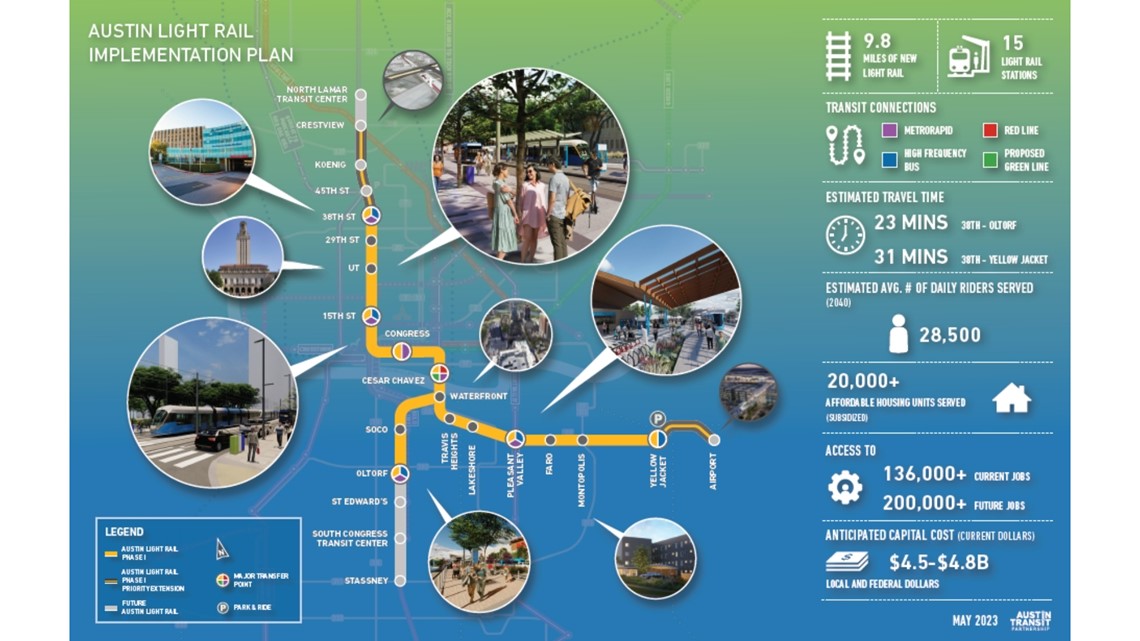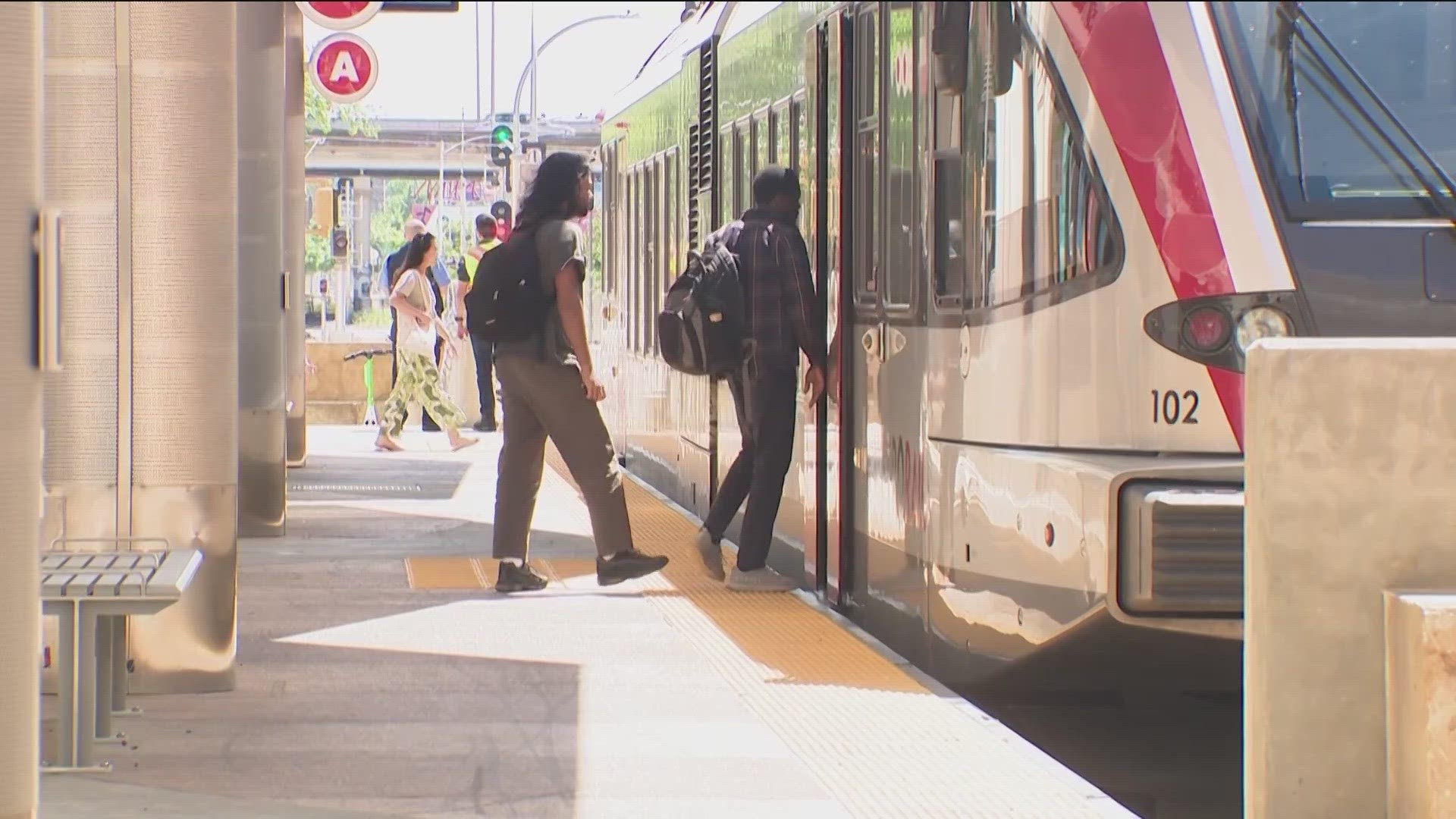AUSTIN, Texas — To link people to jobs, invest in underserved areas and connect to affordable housing options, it is clear to the Austin Transit Partnership (ATP): there must be light rail from 38th Street to Oltorf Street to Yellow Jacket Lane.
"This option actually serves the greatest share of Black, indigenous and people of color, as well as the most affordable housing units," said Lindsay Wood, the executive vice president of engineering and construction for the ATP.
This will be the first phase of the Austin Light Rail implementation plan. It is almost 10 miles of new light rail across 15 stations. ATP leaders estimate it will serve 28,500 daily riders by 2040, and the anticipated capital cost of the project ranges between $4.5 to $4.8 billion.


So, how will this be financed?
Voters approved to build and fund the operations of the light rail three years ago as part of Project Connect. The ATP will also use federal grants.
"We don't need any additional revenue," said Greg Canally, executive director of the ATP.
The ATP estimates the light rail will serve more than 20,000 affordable housing units and bring access to more than 136,000 current jobs and more than 200,000 future jobs.
"Connecting to areas that have been underinvested in for really decades, that was really a driving force from us. We've touched base with more than 8000 Austinites," Canally said.
Canally is referring to the 90 public meetings that took place to get the community talking about Austin light rail. Two months ago, an open house was held at the Austin Central Library where ATP showed five different options for the light rail.
Canally said the ATP team took community feedback and combined it with planning and engineering expertise.
Now that the U.S. Census Bureau has ranked Austin as one of the top 10 largest cities by population, Wood believes Austinites like herself can use this light rail as a chance to "reclaim" their city.
"I grew up in Austin and have seen it, you know, change over time. And I love the opportunity to make things easier, to enjoy our community again," Wood said.
What are the next steps?
The independently-run ATP Board, the Austin City Council and the Metro Board will look at this recommendation. If it gets adopted, ATP can move forward on the planning, engineering and environmental work.
Boomtown is KVUE's series covering the explosive growth in Central Texas. For more Boomtown stories, head to KVUE.com/Boomtown.

